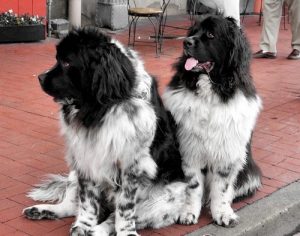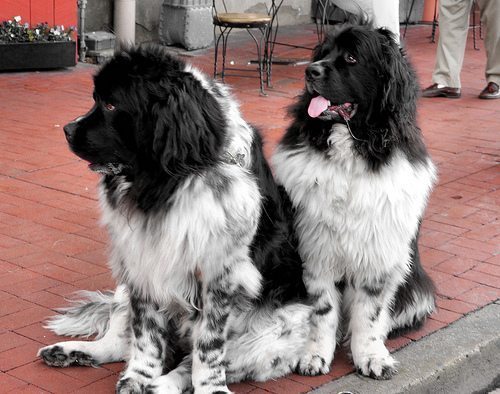Legend has it that the Newfoundland may be a descendant of Viking bear dogs. The Newfoundland is also believed to be a close relative of the Labrador Retriever 
This large breed is a strong, massive dog. The head is heavy and broad. The muzzle is wide and deep, but rather short. The nose is usually black, except on bronze colored animals, which have a brown nose. Eyes are small, deep-set and dark brown. Triangular ears are fairly small and have rounded tips. The tail is strong and broad and hangs downward. They have a double coat which is flat and water resistant. The outer coat is oily, fairly long and coarse and can be straight or wavy. The undercoat is also oily, dense and soft. Canines which live indoors tend to lose their undercoats. Coat colors include black – the most common color – black with blue highlights, black with white markings, brown, gray and white with black markings. The coat needs to brushed weekly with a hard brush. The undercoat is shed twice a year – in the spring and fall. Over bathing should be avoided so as not to strip the coat’s natural oils.
An ideal human companion for the Newfoundland is a family, hiker/joggers, fishermen, or hunters. This calm, patient canine can be a very devoted, loyal and trustworthy friend. They are not known to bark often, but will be protective and brave when necessary. There large appearance alone is enough to deter and intruder although this breed is pretty docile. The Newfoundland is a big sensitive breed and typically gets along well with out pets and children
The Newfoundland can be very messy drinking water and drinks a lot of it. They tend to drool, but are not the worst offenders like some other giant breeds!
Photo: Courtesy of Mambo’Dan via Flickr (CC by 2.0)

